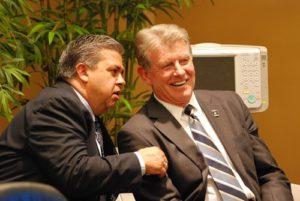Ever testify at a public forum? If you are an education activist, at some point you will have to do so because that is part of how we “govern” schools — based on political decorum.
The Common Core issue in Idaho revealed a whole other aspect of how our representative form of governing education “works” and how the voice of the People is controlled.
Knowing there was growing discontent with the Core, instead of the usual open “hearing,” our Idaho lawmakers decided to convene a panel supposedly based on the idea that it would give “citizens a chance to ask questions on that issue.”
The public was allowed to submit questions ahead of time “so the panelists could research and prepare their answers.” It was reported that over 200 people attended the exhibition and many of us watched online. It was all very controlled. No debate or real discussion ensued and there was not enough time to answer all the questions. That should have made lawmakers wonder.
A week later, a “listening session” was scheduled for lawmakers to hear what the people had to say about upcoming education policies but at that time – no policies had been written — for the public to review. And it was made clear that “People may address the committee on any education topic except Common Core.” Just as it was made clear that at the Common Core session “No public testimony will be taken.”
This type of action by officials is effective volume control. The real pro’s and con’s on Common Core from the People’s perspective has yet to be heard openly for the undecided but caring in Idaho to hear for themselves.
And it seems to have become common practice to limit “speech” to three minutes. On the surface, it seems practical. If there is a multitude of people feeling so strongly about a topic that they come to the statehouse or board meeting, how else do they all get a chance to be heard? Think about it, “a” chance. And in those situations, is the “panel” – be they lawmakers or a school board – really listening?
Instead journalistic glimpses are seen or heard allowing the dissenters to become open prey for the propagandists who have the microphone.
The only option left for dissenters is to turn up the volume.












